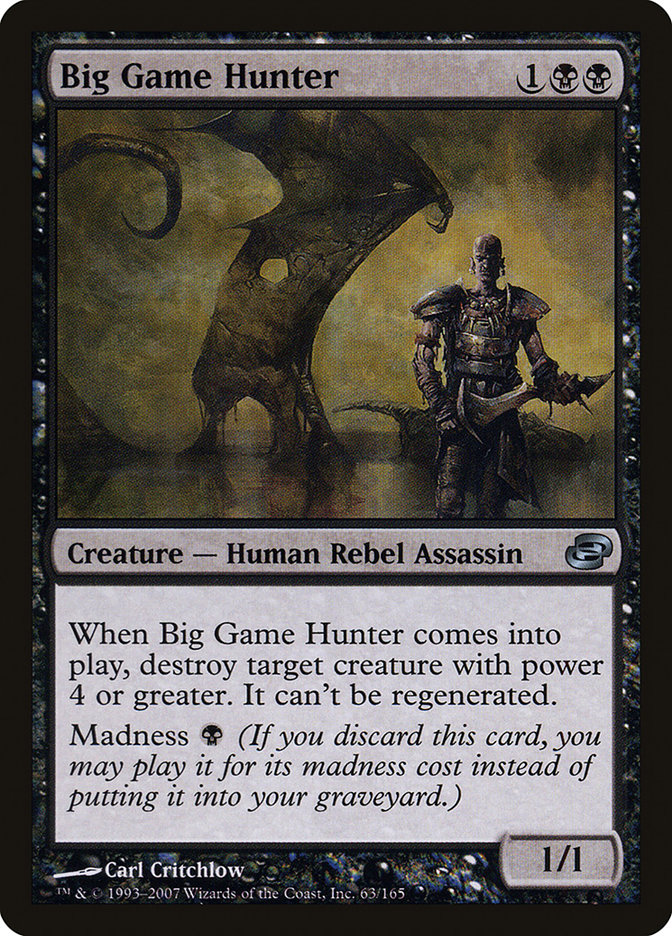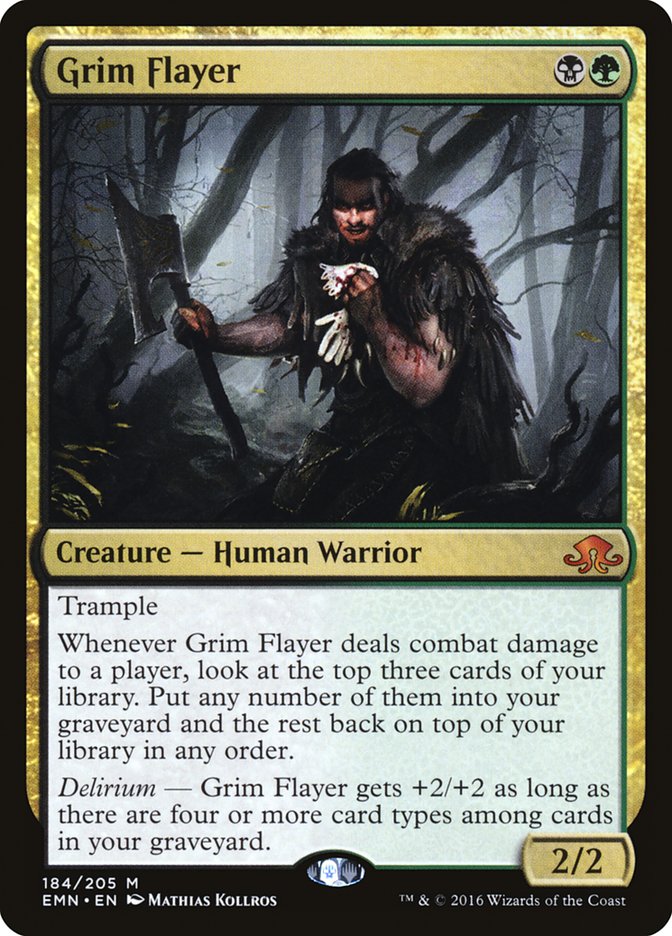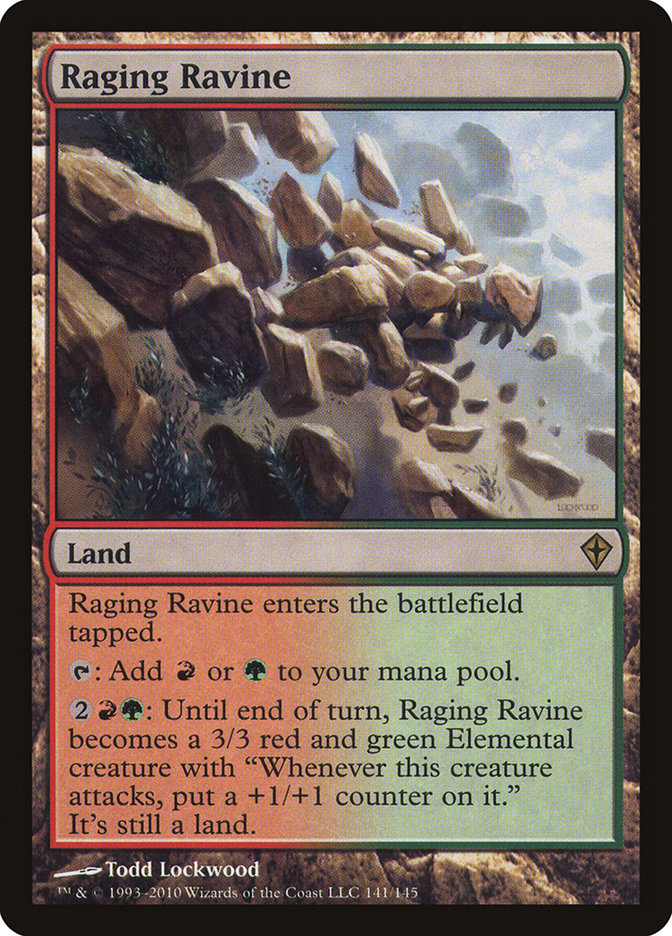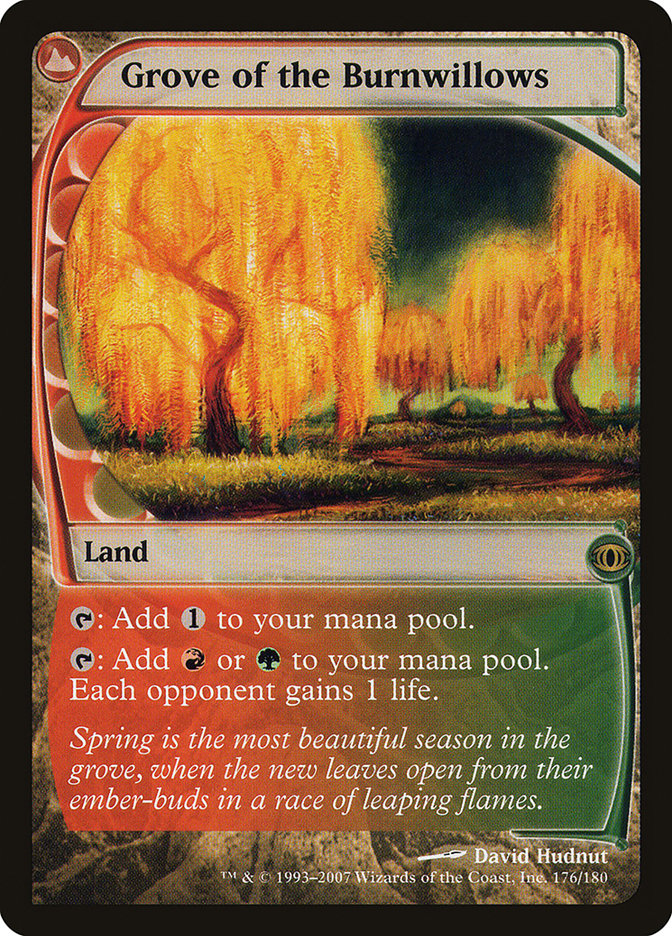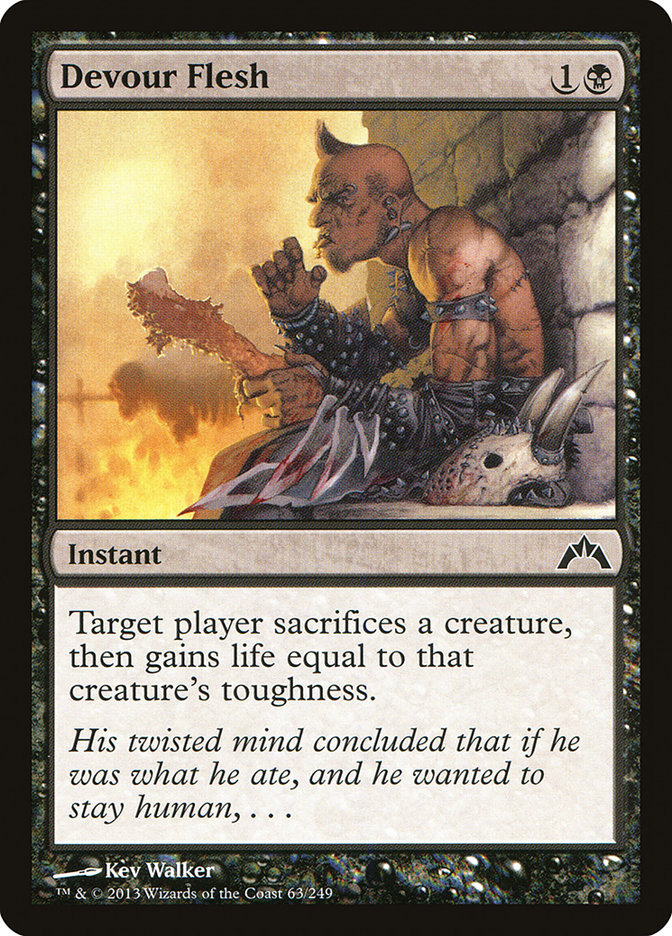Texas is huge. So big that entire metagames and new decks are created from the large player base.
As the saying goes: Don’t mess with Texas. If you do, you want to be prepared to not be run over by the aggressively slanted decks that Texans love to play.
People always second-guess that regional slant when I mention it. Believe it, it’s true.
SCG Dallas/Fort Worth
I didn’t go to last weekend’s SCG Tour stop. Modern was the name and aggro was the game. I preached to anyone that would lend me their ear that Texas (and specifically Dallas/Fort Worth) was known for gettin’ it done with a flurry of beatdown and direct damage.
If there was a tournament that I could’ve brought Soul Sisters to and felt like I had a real chance, it would’ve been #SCGDFW. Todd Stevens had been working on G/W Company, which also preys on small creature decks like Burn and Zoo with cards like Courser of Kruphix and Voice of Resurgence.
Creatures (27)
- 1 Azusa, Lost but Seeking
- 2 Birds of Paradise
- 4 Tarmogoyf
- 4 Noble Hierarch
- 4 Knight of the Reliquary
- 2 Scavenging Ooze
- 3 Voice of Resurgence
- 4 Courser of Kruphix
- 1 Tireless Tracker
- 2 Renegade Rallier
Lands (23)
Spells (10)

I told Todd that G/W Company was a good choice, and even a “first or dead last” choice. By that I meant that if Todd could fade some of the bad matchups in the early rounds, he’d be well set up to win in Day 2 and in the Top 8. He ended up not losing any matches in Day 2 and was also rewarded with a good bracket in the Top 8.
Sadly, the Death’s Shadow can only be avoided so much and he fell in the quarterfinals.
If, before the tournament, I had to guess what the finals matchup would be for SCG Dallas, it would’ve been Burn versus Death’s Shadow.
Creatures (13)
Planeswalkers (3)
Lands (18)
Spells (26)

Creatures (14)
Lands (20)
Spells (26)
Sideboard

Before moving up to Roanoke, VA to work more closely with StarCityGames.com, I lived in Baton Rouge, LA. If you checked the player profiles from the Top 8 of SCG Dallas, you see that Open champion Austin Bursavich is from Baton Rouge as well.
Austin and I gamed together on the regular. In fact, he would’ve Top 8ed Pro Tour Fate Reforged with Modern Infect had I not given him my lucky Tom Ross Infect token for his Round 16 win-and-in versus Justin Cohen, who was playing Amulet Bloom.
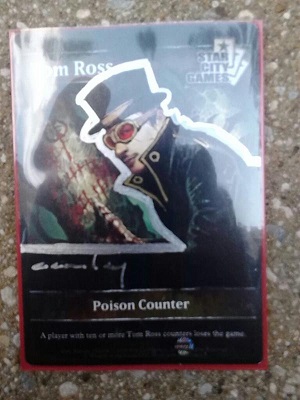
Austin used paper to record poison throughout the tournament before that round. During Game 3, Austin attacked for two poison with a Glistener Elf with a Noble Hierarch trigger. Justin took a complex turn, and in the meantime the Infect token with a die on it was shifted off-camera for coverage purposes. Austin, in mental exhaustion from the tournament, forgot about the earlier two poison when he had another eight poison rolled up to deal on turn 3. He ended up doing a few damage, passing the turn, and dying on Justin’s next turn.
Justin went on to finish second in the Pro Tour, while Austin went back home to Louisiana to be a father and family man… until SCG Dallas, that is. He picked up Death’s Shadow on little-to-no practice and won the tournament by squeaking into Top 8 on tiebreakers, beating The Favorite of the tournament in #1 seed Todd Stevens en route to victory.
Now, most of you probably don’t know that Texas and Louisiana have had a rivalry in Magic over the years. I and other Louisianians would drive to Texas to try to win PTQ slots and Texans would come to Louisiana to snipe ours. Obviously, a state isn’t deserving of its own PTQ slots, but that’s sure how it felt.
As big of a fan of Todd Stevens as I am, I sure was happy to see a friend and Louisiana player take down the Open in Texas. Not only Austin, either; Jody Keith from New Orleans won the Modern Classic with Living End and Josh Newell (also from Louisiana, though I don’t know him) won the Standard Classic with G/R Energy, making it a clean sweep for my home state!
Creatures (26)
- 2 Avalanche Riders
- 1 Twisted Abomination
- 3 Simian Spirit Guide
- 4 Street Wraith
- 2 Faerie Macabre
- 4 Fulminator Mage
- 2 Pale Recluse
- 4 Monstrous Carabid
- 4 Deadshot Minotaur
Lands (19)
Spells (15)

Jody Keith is a Legacy Lands and Modern Living End master. It’s cool to see Living End get some space to breathe now that Dredge is less of a threat. I can only assume that it has a pretty good Death’s Shadow matchup. In fact, it should have a good matchup against most creature decks. Against the noncreature decks, those four Fulminator Mages are sure to do some work.
I wonder if all three events have been won by three players from the same state before? If I had to guess the last time, I’d guess it would’ve been a past Texas Open where three Texans won all three events. After all, Texas is quite a large state is quite a large number of players.
San Antonio
Grand Prix San Antonio is Team Unified Modern, meaning that decks among the three team members cannot share any cards.
If one player uses one copy of a card, say, Relic of Progenitus in their sideboard, then no other teammates may use any copies. They can’t be split up.
This puts a strain on the “good stuff” midrange decks like Jund, Abzan, and Bant Eldrazi. You’ll encounter fewer opponents playing “the best deck,” or rather what someone could consider the best deck. For my team of Todd Stevens and Dan Musser, I know we’d all like to play Noble Hierarch decks. Sadly, we can’t.
It’s obvious that you’ll see more fringe strategies at a Team Unified Modern Grand Prix. Very linear decks like Valakut builds, Affinity, Dredge, or Elves use very few cards from other archetypes. Expect to see a higher percentage of these decks at GP San Antonio.
Let’s Talk Line-Ups
I believe these to be the key cards that decks will have the most cross-over for possible three-deck lineups.
On top of splitting up Modern’s best spells, you have to worry about splitting up the manabases. The shocklands and fetchlands blend into each other too. Can’t really play Valakut and Jund together, even though Jund only needs one Stomping Ground. The fastlands like Blooming Marsh and Blackcleave Cliffs sometimes have competition for each other too.
Most lineups will involve one three-color deck, say, Death’s Shadow, and two mostly independent archetypes like an Affinity and a R/W Burn.
I personally think a Death’s Shadow is too good not to put in a lineup. There are enough variants of Death’s Shadow that there ought to be one configuration available to play if no one is hogging the good black cards already.
I’ve seen Jund, Grixis, Esper, and Sultai Shadow builds all played to reasonable success.
I figure more teams to incorporate Death’s Shadow as opposed to their heavy black deck being 8-Rack or something midrange like “regular” Jund, Grixis, or Abzan.
Todd Stevens played my take on Anti-Death’s Shadow Jund on stream Wednesday to a 4-1 Modern Competitive League record, which is better than I expected.
The deck didn’t have a name at the time, although it didn’t take long for the catchy and rather descriptive name of Predator Jund caught on.
Creatures (14)
Planeswalkers (4)
Lands (23)
Spells (19)

I suggested the deck in my article last week which talked about different ways to attack Death’s Shadow decks. It’s a little gimmicky, basically replacing some Jund staples for some synergistic cards and a better-slanted Death’s Shadow matchup.
Goodbye:
Hello:
It’s a little different from the list I suggested last week. The manabase is a little cleaned up and I put enough sideboard cards where you have enough cards that can be sideboarded in more often. Namely, I wanted enough cards to bring in against Burn, when Thoughtseize and Dark Confidant have to go, and enough against combo, when dedicated creature removal has to get out.
This deck takes a healthy number of staples from other decks, just as any Jund variant would. Still, if Death’s Shadow is going to show up as much as I think it should, then Predator Jund is a fine choice. I know it’s still a consideration for me to play at GP San Antonio.
Expectations
Because of the nature of Unified Modern, certain decks will be underrepresented due to how many “good cards they hog.” That, combined with Texas trends and team dynamics, leaves me with the following impressions of what decks will show up at GP San Antonio.
Not much:
- Abzan
- Jund Midrange
- Jeskai Control
- Grixis Delver
- Infect
- R/W Prison
- Lantern Control
- G/W Company
- Abzan Company
- Kiki Chord
Lots of:
- Tron
- Burn
- Affinity
- Ad Nauseam
- R/G Scapeshift (Valakut)
- R/G Revolt Zoo
- Puresteel Paladin
- Merfolk
- Elves
- Death’s Shadow
- Skred Red
- Dredge
- Living End
- G/R Land Destruction
Death’s Shadow is basically the only deck that includes a large portion of Modern staples that I don’t have under the “Not much” section. Again, this is because of how many different ways the deck can be built and how well-established it is as the best deck in Modern.
The rest of the decks listed largely fall under the same theme. Decks that use a large number of staples that bleed into different decks will be underrepresented, while independent decks will see an above average amount of play.
This is also skewed somewhat towards aggressive decks seeing more play than control decks. As I mentioned, Texas likes to get things done, and done fast. Beyond that, however, teammates don’t especially like sitting around waiting for the same one player to finish their match round after round. Some amount of team camaraderie will be present here.
Tips
- It’s a reasonable idea to put a very fast deck in the hands of the middle-seat player. This way they’ll typically finish first and be able to help out the teammates on both sides.
- Pay some attention to the cards that your teammates’ opponents are playing. If you see a Leyline of the Void out of the sideboard of one, then you can be sure that the other opposing decks don’t have Leyline of the Void.
- Communication is key. You can talk as much as you want with your teammates, offering suggestions from anything to play decisions to mulligans. You can tell them anything and everything you know about a particular matchup and, of course, eliminate cards to play around based on what’s been revealed in other decks from the opposing team.
- It’s unlikely that all three team members will be of equal experience. If one member is stronger than the other two, I suggest putting them in the middle (seat B) so as to help the neighboring teammates. If two players are experienced while the third isn’t, then it’s best to position the third player in the middle so as to best receive advice from the more seasoned teammates.
Team events are always fun for me, win or lose. Best of luck to you and yours at GP San Antonio!


